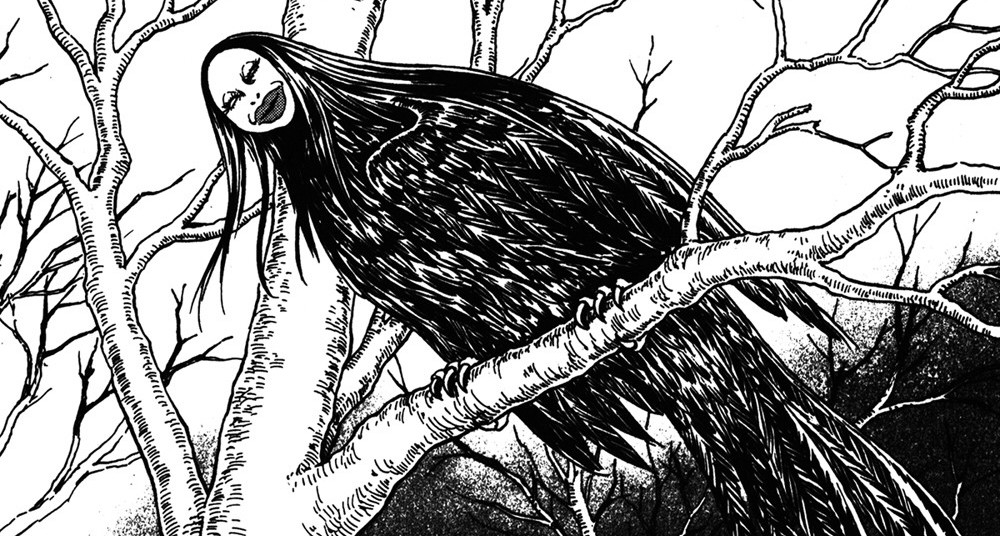Appendix:
In the 1970s, an animal whose appearance and attack patterns bore frightening resemblance to La Lechuza, a witch fabled to transform into a man-eating owl, terrorized the border towns of South Texas. Was the creature the legendary witch come to life? In Part B of NatMysteryCast’s look at anomalous avians of Texas’s Rio Grande Valley, Emery Coolcats explores the history of the cryptid known as the Big Bird.

Mention of the “Big Bird” of South Texas often conjures visions of a certain beloved muppet, reimagined as some kind of maltempered predator.
But this rather uninspired and oversimplified name has actually been attributed to a creature that has little in common with Sesame Street’s friendly yellow host, aside from perhaps its staggering height. You see, “bird” is a loose term for the animal that stalked the Mexican border. It’s true that the creature was described as having feathers and scaly, taloned feet, but that’s where the ornithological resemblances ended. The Big Bird was often reported to have leathery, bat-like wings, a bald head, and freakish, humanoid facial features with bright red eyes. Standing 5 to 7 feet tall, with a 12 to 15 foot wingspan, witnesses often claimed the creature carried itself like a stork.



After a rash of sightings and attacks on residents of the Rio Grande Valley from January to March of 1976, the creature was rumored to have set its appetites on local cattle populations. Attempts to sketch the monster were bizarre enough, but believers had yet more outlandish explanations for what the creature could be, ranging from the extinct to the otherworldly.




Of course, there were plenty of skeptics as well, making the case for a number of existing large species of bird.



Just as the hype surrounding the creature was hitting a fever-pitch, wildlife authorities located and captured a jabiru in the area. The jabiru is a species of Central American stork capable of growing to heights of roughly 5 feet, with wings spanning 10 feet when in flight. The animal is white in plumage and with a featherless head that is black in color, with vibrant red markings on its neck. If people were encountering this jabiru in the dark, it’s possible to see how its size and posture might have resulted in reports of a stork-like monster with glowing red eyes.


Jabirus aren’t native to the Rio Grande Valley, so its presence there was a bit of a mystery in itself. Complicating things further, local media also captured footage of a large blue heron wandering city streets in the middle of the day. Herons are also strangers to the area, and with multiple large, uncommon birds wandering around, authorities and media outlets felt confident closing the book on the Big Bird mystery.

However, some aspects of these explanations didn’t sit well with the public, even among skeptics. Neither bird is nocturnal, and sightings of the creature occurred almost exclusively at night. In addition, the bird allegedly attacked several witnesses, with at least one man receiving medical treatment for his lacerations.
Interestingly, all of the Big Bird’s victims happened to be men — usually, men that had been drinking. These men reported feelings of being watched and hearing strange whistling before the animal tried to grab them by their shoulders and carry them away. As we learned in Part A, La Lechuza’s prey of choice is drunken men. She kills not out of hunger but hatred, stalking them and whistling to lure them away from safety. The moment they turn their attention towards her, she strikes, carrying them off to exact her revenge. These details didn’t escape the notice of Rio Grande Valley residents, who wondered if perhaps the owl-witch had placed her terrible curse on their homes.

Sources:
Valley Morning Star from Harlingen, Texas – January 13, 1976
Valley Morning Star from Harlingen, Texas – January 14, 1976
The Brownsville Herald from Brownsville, Texas – January 23rd, 1976
Big Bird Legend Haunts Witnesses by Alma Walzer, The Monitor
Spirits of the Border: The History and Mystery of the Rio Grande by Sharon and Ken Hudnall
Big Bird: (Texas, USA) by Rob Morphy
Creature Features by David Bowles, The Monitor
Museum Management:
Museum theme by Michael Guy Bowman
Listen to more at: bowman.bandcamp.com
Rachel: Designer #UkuleleWitch @rachelvice
Tour Guide: Emery Coolcats
Twitter: @natmysterycast | Email: natmysterypodcast@gmail.com | Home: pome-mag.com/category/pomecast
Follow the show on iTunes or Soundcloud!
Museum of Natural Mystery is part of the POMEcast network, and thanks a million to the ladies of POME for helping this show get up and running! But above all, thank you for listening!




